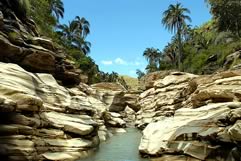Inicio » Lugares Turísticos en Bolivia
Lugares Turísticos en Bolivia

Salar de Uyuni
El Salar de Uyuni en Bolivia se form� por la desaparici�n de un oc�ano interior que cubr�a la mayor parte del Altiplano y se extend�a hasta el lago Titicaca. Es una experiencia extraordinaria cruzar este lago de sal en autom�vil.Ver más

Lago Titicaca
El Lago Titicaca es el lago navegable m�s alto del mundo con una altura promedio de 3,810 metros sobre el nivel del mar. El Lago Titicaca es una gran atracci�n tur�stica para los amantes de la naturaleza.Ver más

La ciudad de La Paz
La Paz es la capital administrativa de Bolivia. La altitud de la ciudad var�a desde aproximadamente 4058 metros (13,313 pies) sobre el nivel del mar en El Alto (donde se encuentra el aeropuerto) hasta 3100 metros (10,170 pies) en la zona residencial m�s baja. Es la capital nacional m�s alta del mundo.Ver más

Camino de la Muerte
Conoce el Camino de la Muerte, una carretera que conecta La Paz, capital de Bolivia, con la regi�n de los Yungas, un sendero que, en las �ltimas d�cadas, se ha ganado la fama del camino m�s mortal del planeta.Ver más

Carnaval de Oruro
El Carnaval de Oruro se celebra como un signo de devoci�n a la Virgen de Socavon. El Carnaval de Oruro es uno de los mayores eventos culturales y festividades en Bolivia y Am�rica Latina.Ver más

Rurrenabaque
Rurrenabaque (o simplemente Rurre) es un pueblo peque�o (poblaci�n 15,000) a orillas del R�o Beni en la cuenca amaz�nica boliviana. Los viajes a la jungla en el cercano Parque Nacional Madidi son las principales atracciones.Ver más

Minas de Plata
Una de las principales atracciones tur�sticas de Potos� en Bolivia es el Cerro Rico. Desde las profundidades de esta incre�ble monta�a, se han extra�do grandes cantidades de plata desde 1545.Ver más
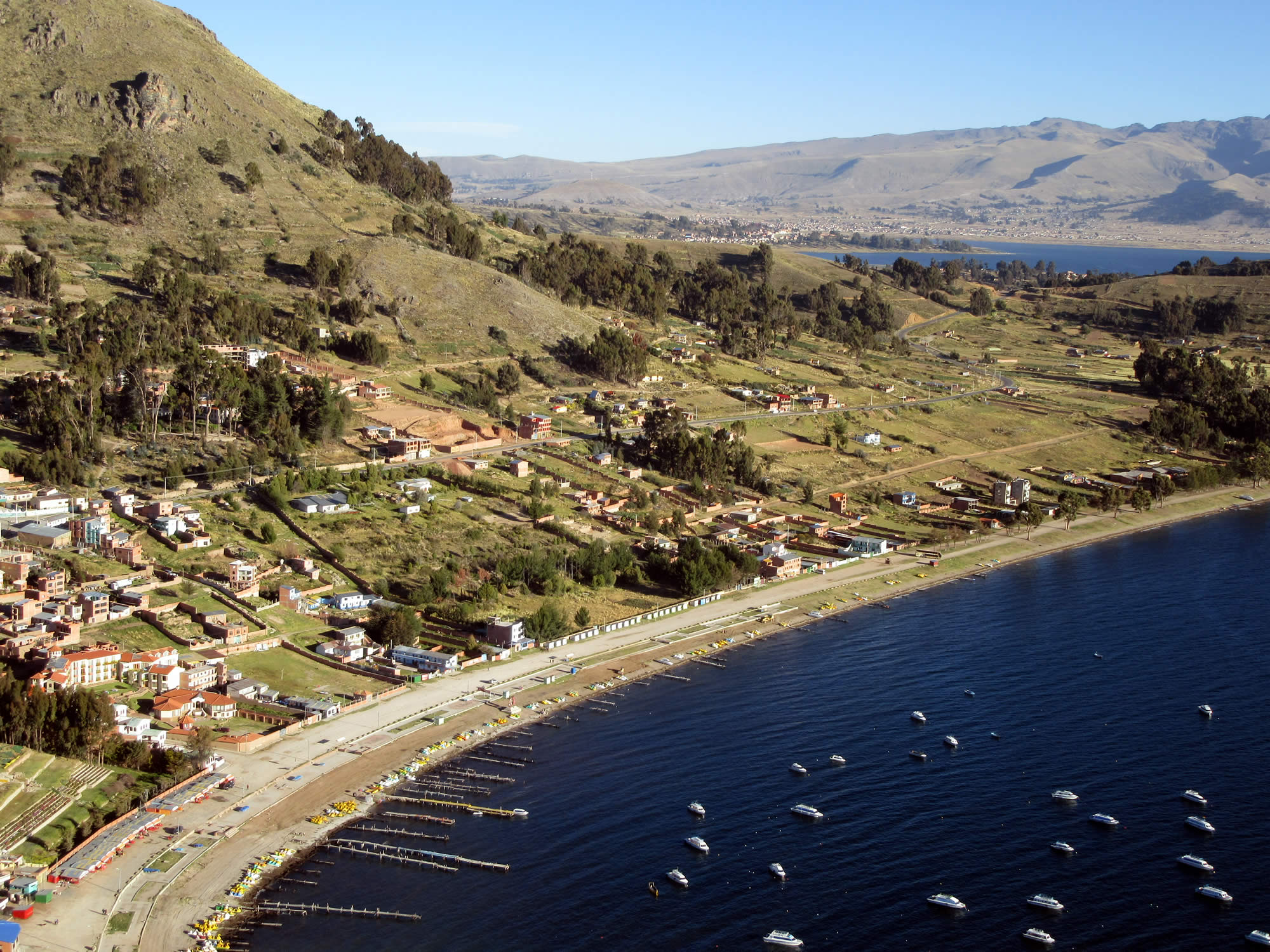
Copacabana
Copacabana es un peque�o pueblo ubicado en la costa boliviana del lago Titicaca. Este es el Copacabana original y un popular destino tur�stico para viajeros.Ver más

Parque Nacional Apolobamba
El Parque Nacional Apolobamba se encuentra al oeste de La Paz, Bolivia y tiene una belleza esc�nica fant�stica debido a las altas monta�as cubiertas de nieve: Akamani, Presidente y Katantika.Ver más

Parque Nacional Cotapata
El Parque Nacional Cotapata se encuentra al noreste de La Paz, Bolivia. Una de sus mayores atracciones es la ruta precolombina de Chucura o Choro o Camino Inca.Ver más

Parque Nacional Madidi
El Parque Nacional Madidi se encuentra al noreste de La Paz, Bolivia. Madidi es el �rea protegida con la mayor diversidad de flora: de 5,000 a 6,000 especies.Ver más

Parque Nacional Noel Kempf Mercado
El Parque Nacional Noel Kempf Mercado en Santa Cruz, Bolivia ha sido declarado Patrimonio Natural de la Humanidad por la UNESCO. El parque Noel Kempf Mercado presenta una belleza esc�nica excepcional gracias a grandes farallones y cascadas de la meseta de Caparu.Ver más
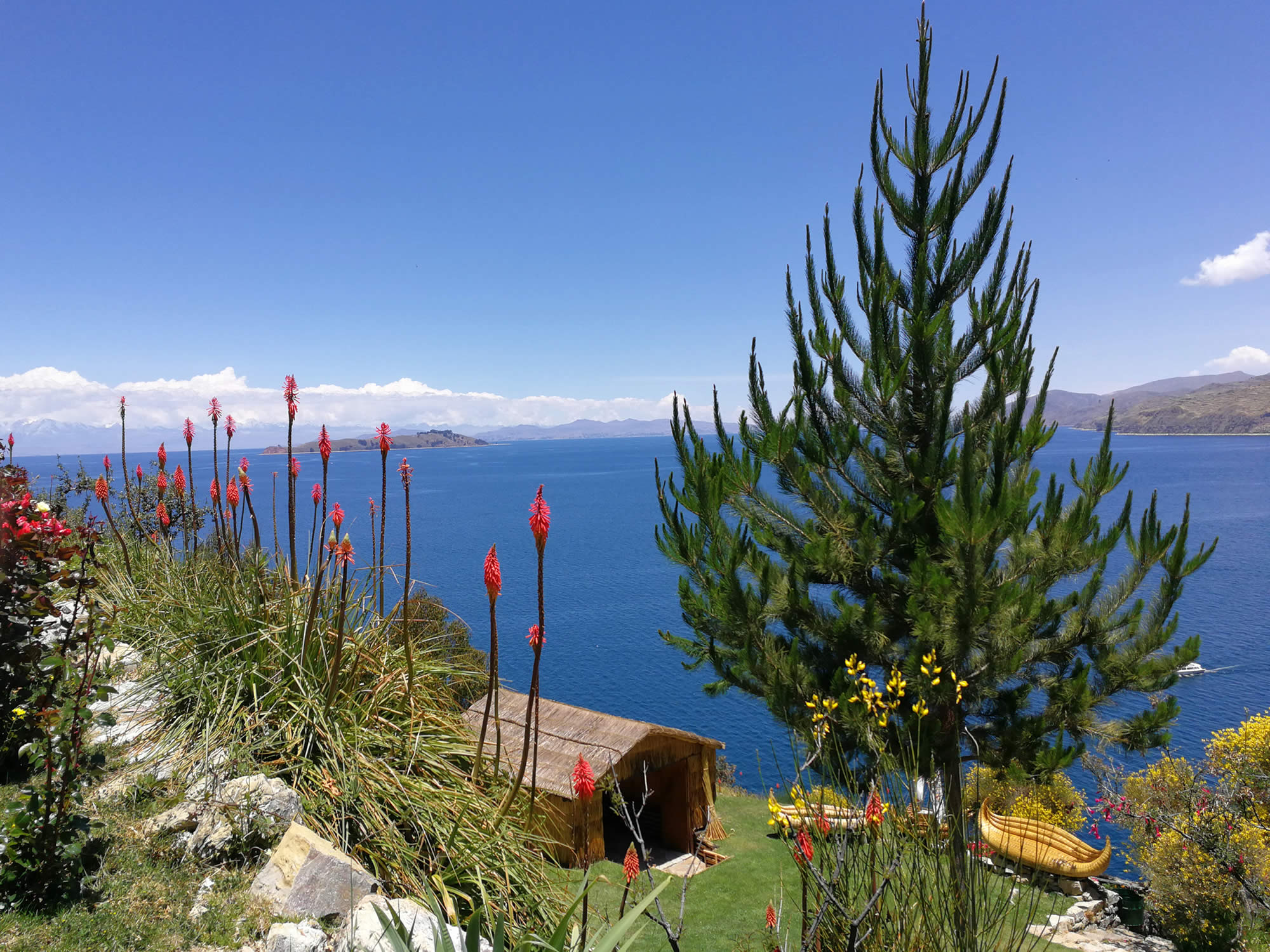
Isla del Sol
La Isla del Sol se encuentra en el extremo noroeste de la pen�nsula de Copacabana, Bolivia. La Isla del Sol tiene varios monumentos antiguos: el Palacio Pilkokaina y el Chinkana o Laberinto, La Escalera de los Incas, la Fuente Sagrada de la Juventud y las Terrazas de los Incas.Ver más

Parque Nacional Sajama
El Parque Nacional Sajama se encuentra al noroeste de Oruro, Bolivia. Cuenta con la imponente monta�a nevada de Sajama, lagunas altoandinas, aguas termales y rutas de andinismo.Ver más

Pueblo de Uyuni
Uyuni en Bolivia es una peque�a ciudad situada en el medio de la nada. El turismo es su principal fuente de prosperidad gracias al Salar de Uyuni, el mayor del mundo.Ver más
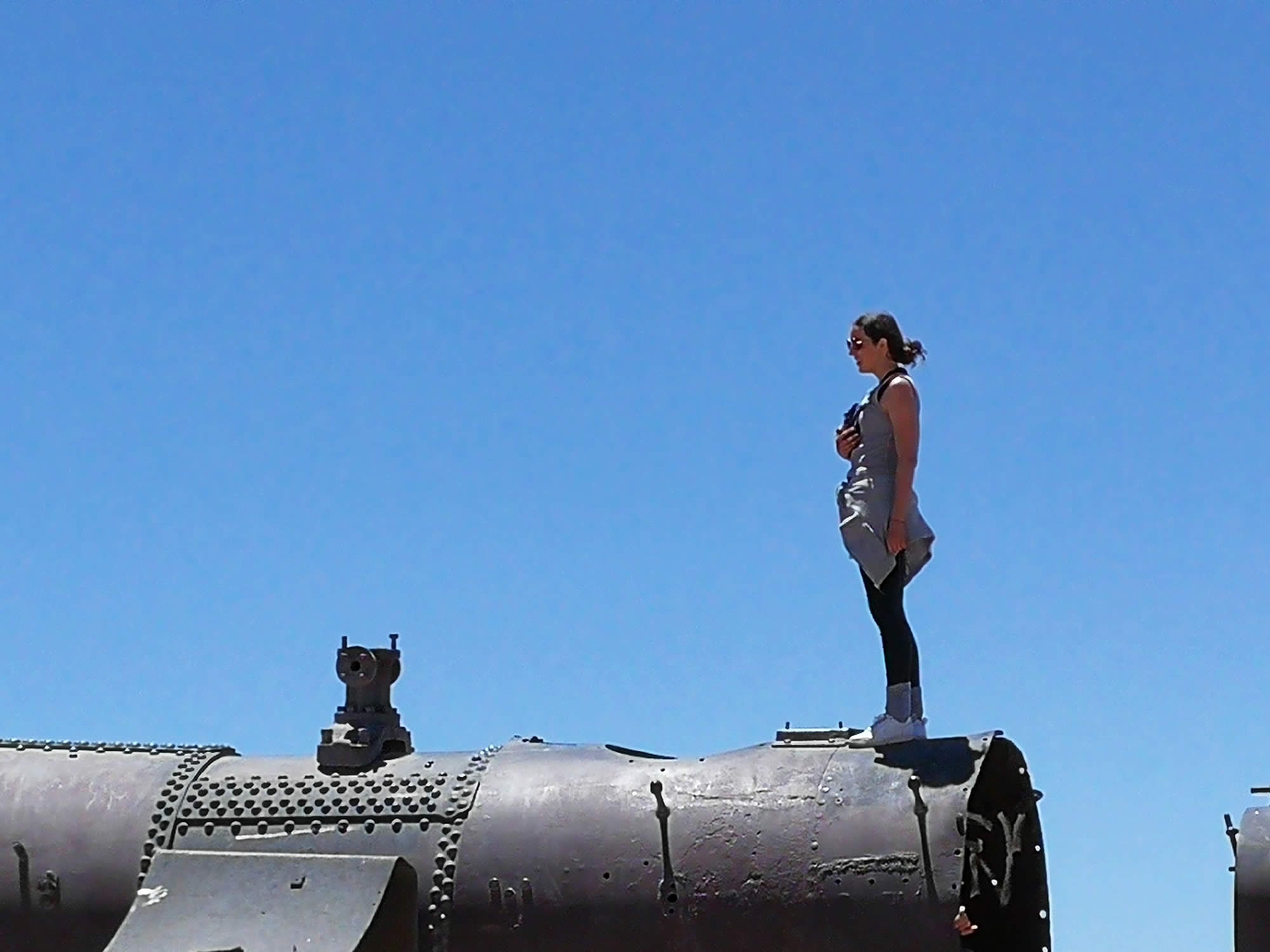
Cementerio de Trenes
La primera línea férrea en Bolivia fue Uyuni-Antofagasta e inicio trabajos el año 1899 y construida por ingenieros británicos quienes arribaron a Uyuni cerca del final del siglo XIX formando la pequeña comunidad de Uyuni.Ver más

Misiones Jesu�ticas
Las misiones jesu�ticas en Bolivia se han mantenido intactas e incluso despu�s de cientos de a�os siguen maravillando a los visitantes. Est�n ubicados en las tierras bajas orientales de Santa Cruz, Bolivia, a unas 6 horas de la ciudad.Ver más

Chacaltaya
En lo alto de los Andes, lejos del ajetreo y el bullicio de La Paz, se encuentra una estaci�n de esqu� hermosa pero misteriosa, una vez famosa por ser la pista de esqu� de m�s alto rendimiento en el mundo.Ver más
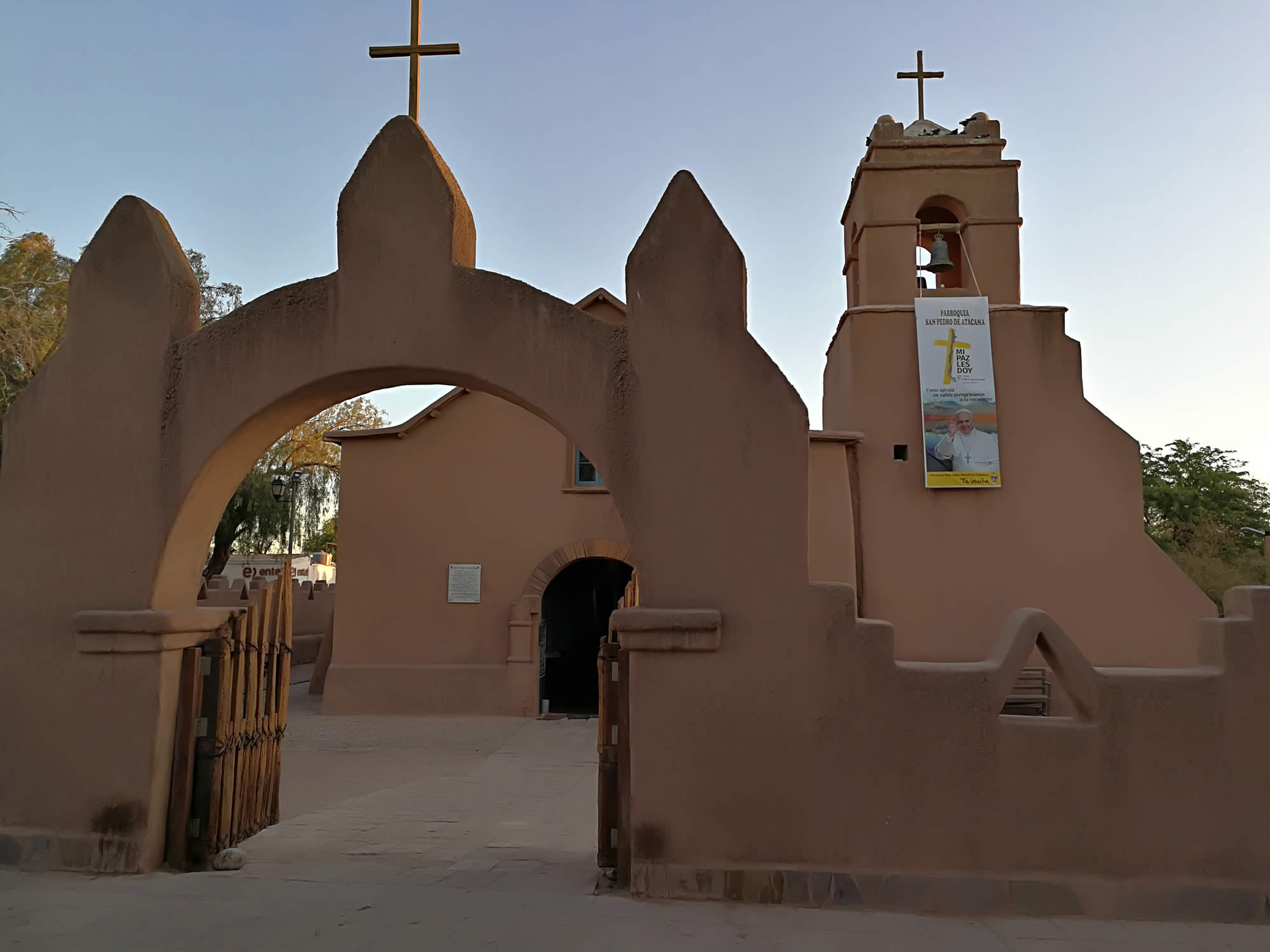
San Pedro de Atacama
La ciudad de San Pedro Atacama se encuentra en un oasis dentro del desierto de San Pedro de Atacama a 2440 m.a.s.l. y 1.670 kil�metros de Santiago de Chile. Es la puerta de entrada al salar m�s grande del mundo: el Salar de Uyuni en Bolivia.Ver más

Parque Nacional Torotoro
El Parque Nacional Torotoro est� ubicado al norte de Potos�, Bolivia. Entre los atractivos se encuentran la caverna de Huma Jalanta, Huaca Senka. Hay huellas de dinosaurios, las ruinas incas de Flame Chaqui y pinturas rupestres.Ver más

Cerro de Huayllas
El cerro Huallyas atesora huellas de dinosaurios de 80 millones de a�os y f�siles a solo cinco minutos en autom�vil de la ciudad de Torotoro.Ver más

Caverna de Umajalanta
La Caverna de Umajalanta se encuentra a solo 10 kil�metros de la ciudad de Toro Toro. Mide 4600 metros de largo y ofrece a sus visitantes impresionantes vistas subterr�neas de estalagmitas y estalactitas.Ver más

Ciudad de Itas - Ciudad de Piedra
La ciudad de Itas es un lugar �nico a 21 kil�metros al oeste de la localidad de Torotoro con enormes formaciones rocosas cuya forma particular se asemeja a una ciudad real.Ver más

Carreras Pampa
Carreras Pampa es uno de los pocos lugares del mundo en el cual se puede observar huellas de dinosaurios a corta distancia.Ver más

Ca�on de Torotoro
El Ca�on de Torotoro se constituye en un hermoso paisaje natural, cuenta con un mirador desde donde se aprecian las diferentes capas tect�nicas dibujadas en el perfil de las paredes que encierran el ca��n.Ver más

Sinclinal de Torotoro
Testigo de la tect�nica andina �nica es el hermoso sinclinal de Torotoro. El pliegue tiene la forma de una gigantesca canaleta de 45 km de largo por 10 km de ancho, cuyos flancos laterales son constituidos por las rocas calc�reas blanquecinasVer más

Puentes Petreos y Teatro Natural
En los alrededores del Ca�on de Torotoro podr�n observar dos puentes p�treos formados por la erosi�n del agua y el viento. As� mismo observar�n unas formaciones rocosas que simulan un coliseo.Ver más

Siete Vueltas
Parte de la riqueza paleontol�gica de Torotoro destaca la existencia de cientos de f�siles de los primeros seres invertebrados que habitaron las playas marinas en el periodo C�mbrico.Ver más

Huellas de Dinosaurios
Las huellas de dinoraurios han sido encontradas en todos los alrededores de Torotoro, sin embargo, las m�s representativas e intactas se encuentran a tan solo 300 metros del pueblo.Ver más

Casa Nacional de la Moneda
The Casa de la Moneda is a vast, elegant, and strikingly beautiful building that takes up a whole city block. In many specialists' opinion, it is the most important building among the colonial architecture of South America. Its construction began in 1750 and concluded in 1773. The works were in charge of the manufacturer and architect Salvador de VilaVer más

Pueblo de Colchani
El Pueblo de Colchani constituye el punto de parada obligatorio camino al Majestuoso Salar de Uyuni, una de las peculiaridades del lugar es la construcción de pequeñas casas hechas con ladrillos de sal y uno de sus atractivos además de la fábrica de sal son los puestos de artesanías de sal situados en la calle principal.Ver más

Fauna Andina
The Andean fauna populating the surroundings of the Uyuni Salt Flat and the amazing lagoons is diverse and rich.Ver más

Caverna de Chiflonqaqa
La Caverna de Chiflonqaqa se encuentra ubicada en medio de una pared rocosa en la naciente del ca��n de Torotoro y la bifurcaci�n de los r�os Fierro Waqyk� y Molle Loma.Ver más

Incahuasi Island
Set on the remains of a volcano, Incahuasi Island, was used as a resting place for the Incas who used to cross the salt flat with llamas.Ver más

Pueblo de Torotoro
Torotoro es un asentamiento urbano que los colonizadores espa�oles organizaron y bautizaron como "pueblo de indios" durante la segunda mitad del siglo XVI por orden del virrey Francisco de Toledo.Ver más

Cristo de la Concordia
Perched atop the San Pedro hill in Cochabamba, Bolivia, the 33 m (109 ft) tall statue of the Cristo de la Concordia is the tallest of its kind in the world. Visitors can climb inside up to the arms for a panoramic view of the city of Cochabamba.Ver más

Desierto de Siloli
El Desierto de Siloli se encuentra en el departamento de Potosí, al suroeste de Bolivia, a 5000 m.s.n.m. es considerado uno de los más áridos del mundo, debido a los bajos niveles de precipitaciones después del Desierto de Atacama.Ver más

Cementerio de Tortugas
En medio de las dunas de arena rojiza se encuentran sepultados cientos de f�siles de tortugas de hace 500 millones de a�os.Ver más

Ojos de Sal
The eyes of the salt flat are the outlets for subterranean rivers flowing under the Uyuni Salt Flat.Ver más

El Fuerte de Llamachaki
La fortaleza incaica de Llamachaqui (pie de llama en quechua), es una monumental fortaleza se encuentra ubicada en la cresta de un cerro anticlinal.Ver más

Lagunas incre�bles
Near the Salt Flats of Uyuni, Bolivia several spectacular lagoons amaze the visitors - Laguna Verde (Green Lagoon), Laguna Colorada (Red Lagoon), Laguna Blanca (White Lagoon), Laguna Hedionda (Stinking Lagoon), Laguna Canapa.Ver más

Cathedral and Plaza Murillo
Plaza Murillo in La Paz, Bolivia, holds the Presidential Palace, and in the center of Plaza Murillo, opposite, stands a statue of President Gualberto Villarroel. The Cathedral was built in 1835 on a steep hillside and the main entrance is 12m higher than its base on Calle Potosi.Ver más

Laguna Ca�apa
La Laguna Cañapa es una laguna de agua salada situada en departamento de Sud Lipez del departamento de Potosí, Bolivia, próxima a la Laguna Hedionda y rodeada por tres volcanes: Caquena, Tapaquillcha y Cañapa.Ver más

Laguna Ramaditas
La Laguna Ramaditas es un cuerpo de agua dulce con una superficie aproximada de 4 kilómetros cuadrados emplazada a una altura de 4400 m.s.n.m. Se encuentra situada dentro de la Reserva Nacional Eduardo Avaroa en la provincial Sud Lipez del departamento de Potosí, Bolivia.Ver más

Laguna Shiarkhota
La Laguna Shiarkhota (Chiarkota) es un cuerpo de agua dulce de aproximadamente 35 hectáreas situada a los pies del Macizo del Condoriri en la provincial de Sud Lipez del departamento de Potosí, Bolivia.Ver más

Laguna Honda
The Honda lagoon is the deepest lagoon, its light blue waters contrast with the highland's earthy colors.Ver más

Batea Qhocha
La naturaleza ha formado lugares innarrables por lo ex�tico y bello, semejantes solo al sue�o del para�so como la Batea Qhocha, formaciones de agua, piedra y piscinas naturales.Ver más

Mercado de Brujas
The Witches Market is one of the main and most impressive attractions in La Paz, Bolivia. The Witches Market has shops of typical outfits made by hand with completely natural materials, souvenirs and other ornaments made of exotic types of wood, carved with ancestral motivesVer más

Reserva Natural Eduardo Avaroa
La Reserva Natural Eduardo Avaroa se encuentra situada al sur del departamento de Potosí en la provincia de Sud Lipez. Limita al sur con la republica de argentina y al oeste con Chile.Ver más

Isla de la Luna
The Island of the Moon (Koati) is located at 7 Km. from the Island of the Sun. The ruins of the Inak Uyu (Palace or Temple of the Moon) are found here.Ver más

Aguas termales y g�iseres
Aproximadamente a una hora de la Laguna Colorada hay varios g�iseres. Este suministro interminable de agua se escupe del suelo a una temperatura de 90�C, a trav�s de fumarolas y grietas a trav�s de las cuales a veces incluso lava volc�nica erupciona.Ver más
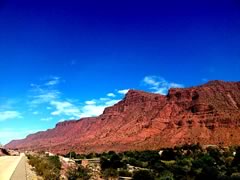
Villa Abecia
On the road to Tarija in Bolivia is Higuerayoc or Abecia Village. This valley is ideal for grapevine production and the bathing results have amazingly clean and pure water which attract a lot of visitors.Ver más

Casa de las Tres Portadas
This construction is also known as 'Las Recogidas' (The Cloistered Ones). It used to be a community house for lay sisters, most of whom were Natives. This religious construction belongs to the Franciscan OrderVer más

Pueblo de San Cristobal
El Pueblo de San Cristóbal se encuentra en la provincia de Colcha K en el departamento de Potosí, Bolivia; a aproximadamente 2 horas del Pueblo de Uyuni a 3775 m.s.n.m.Ver más

Polques aguas termales
The Polques Termal waters are well-known because of its intense volcanic activity. Early in the morning tourists enjoy to have a bath in these healing waters.Ver más

Volcan Licancabur
Guardian of the Verde Lagoon the Licancahur Volvano is very popular among tourist due to its similarity to Mars. The NASA has been making studies about the volcano reason why it captures more attention and interest.Ver más

Volcan Tunupa
The Tunupa Volcano is located at the Daniel Campos province in the Oruro department. The volcano has a height of 5432 meters and can be seen from the entire Uyuni Salt Flat. The Tunupa Volcano area is home of different fauna species like flamencos, ostriches and foxes.Ver más

Volcan Ollague
Ollague let to enjoy a panoramic view of Ascotan and Carcote Salt Flats. The volcano has a crater of 1250 square meters from where displays fumarolic activity, particularly to the south of its summit area but no historical eruptions have been confirmed from Ollague. The volcano also contains a deictic summit lava dome.Ver más

Huatajata Community
Huatajata is an indigenous aymara community conformed by 11 communities and it's one of the most important tourist areas in the occident of Bolivia.Ver más

San Jose de Chiquitos
This Jesuit settlement is the oldest in the area and is very similar to the North Argentinean or Paraguayan missions, However these last missions are now ruins or museums, while San Jose church still celebrates mass and hosts a very active music school.Ver más

Cascadas en la Poza de las Golondrinas
La Poza de las Golondrinas que tiene una profundidad de 40 metros y la cascada de 30 a 35 metros de alto. En la madrugada se puede divisar cientos de golondrinas que vuelan en los alrededores.Ver más

Calle Jaen
Calle Jaen in La Paz, Bolivia has been preserved from its Spanish days, and is home to 10 interesting museums clustered together. Calle Jaen is La Paz's finest colonial street, and the museums can easily be bundled into one visit.Ver más

Winter Solstice - Aymara's New Year
The winter solstice is celebrated in Tiwanaku Town every June 21st. This date marks the Aymara New Year or Machaj Mara and it also marks the beginning of a new agricultural year.Ver más

National Park Amboro
The National Park Amboro in Bolivia presents a great scenic beauty: deep valleys, the torrential rivers and the water falls. It is located to the West of Santa Cruz, among the Ichilo, Manuel Maria Caballero, Florida and Andres Ibanez provinces.Ver más

National Park Carrasco
The National Park Carrasco is located to the east of Cochabamba, Bolivia. Carrasco boasts incredible cloud forests and mountain scenery, deep valleys and canyons, torrential rivers, waterfalls, and exuberant vegetation.Ver más

National Park Tunari
The Tunari National Park is located to the West of Cochabamba, Bolivia. The Tunari National Park features Mount Tunari reaching about 5,200 meters and numerous lakes.Ver más

Valle de la Luna
The Valley of the Moon is located at about 5 kilometers from La Paz, Bolivia. The scenery is formed by rocky formations, which gives an eerie sensation of being on another planet or the moon.Ver más

Puerto Suarez
Puerto Suarez is the main landmark of the borderline between Brazil and Bolivia, and it is also the starting point of the tour of the Bolivian portion of the Wetlands (Pantanal).Ver más

Villa Tunari
Villa Tunari in Tropical Area of Cochabamba is located in the center of Bolivia between the Andes Mountain Range and the lowlands of the Amazon. Enormous ecological diversity is spread all across its rivers and forests.Ver más

Coipasa Lake
Coipasa is Bolivia's second largest salt flat, in the arid but colourful Altiplano of Bolivia, about 100 miles (160 km) southwest of the city of Oruro, near the Chilean border.Ver más

Manuripi Wildlife Reserve
Manuripu Wildlife reserve is an extense area surrounded by rivers, the access in rain season is dificult, the reserve has large variety of fauna, birds specially, the wood extracction is one of the most important activities in the area, beautiful and wild.Ver más

Metropolitan Cathedral
The Metropolitan Cathedral of Santa Cruz was built by Brother Mercedario Diego de Porres during the times of the Spanish Viceroy Toledo. The Metropolitan Cathedral in Santa Cruz is remarkable for its wooden vaults and for the pictorial decoration that covers them.Ver más

Municipal Zoo
The Municipal Zoo in Santa Cruz, Bolivia is one of the most complete zoos in this part of South America with a variety of typical fauna of the region.Ver más

Plaza 24 de septiembre
The Plaza 24 de Septiembre main square is one of the most important meeting points of the city of Santa Cruz in Bolivia. Here, a magnificent Cathedral can be found (which has a museum in it), the Casa de la Cultura (House of Culture) and the Palacio Prefectural (Prefecture's Palace).Ver más

Parque Arenal
Parque Arenal in Santa Cruz, Bolivia is a favorite among locals. Parque Arenal surrounds a lagoon and is a perfect place for lounging or taking a stroll. On an island in the middle of the lagoon there is a mural by Santa Cruz-born artist Carlo Lorgio Vaca, famous for his bas-relief murals.Ver más

Caba�as del Pirai
The Cabanas del Pirai (Pirai Cabins) are located in the western sector of Santa Cruz, Bolivia, at the end of the Roca Coronado Avenue. The Pirai River is a favorite place for the local people in the hot days of summerVer más

Cotoca Sanctuary
Cotoca is a small town of Guarani origin located to the East of Santa Cruz in Bolivia. The Sanctuary of the Virgen de Cotoca, a parrish run by Dominican priests, is a beautiful colonial-style church located on the central plaza.Ver más

Los Espejillos
Los Espejillos is a remote tropical paradise in Santa Cruz, Bolivia. With its sparkling waterfalls and natural pools it is truly a wonder of nature. A series of waterfalls have carved out and filled several deep pools as they cascade downward in step-like fashion, each flowing into the next.Ver más

Boat trip in the Amazon region
The Reina de Enin Ecological Cruiser is a riverboat that navigates on the Mamore River, the largest river in Bolivia, and a tributary of the Amazon River. The cruiser offers 2-6 day tours during which time you will be in close contact with wildlife and nature.Ver más

La Chiquitania
La Chiquitania in Santa Cruz, Bolivia, is a vast and extraordinary territory in which we are able to admire churches of the Jesuit period and where we find wonderful wood carvings and equally beautiful paintings of saints and scenes of religious life.Ver más

Cathedral of Cochabamba
Cathedral of Cochabamba, Bolivia. The facade reflects a mestizo fusion of Spanish Baroque and indigenous architectural styles.Ver más

Palacio Portales
The Palacio Portales (Portales Palace) in Cochabamba, Bolivia, was built between 1915 and 1927. Portales was a residence of Simon Iturri Patino, Bolivian millionaire, called 'the tin baron' who controlled over half of the nation's output in the 1930s.Ver más

Archeological Museum
The Archeological Museum of Cochabamba, Bolivia, displays approximately 40,000 archaeological, ethnographic and paleontological pieces mostly from the Department of Cochabamba and some from Bolivia's other regions.Ver más

La Recoletta
On the Northern side of the Rio Rocha in Cochabamba, Bolivia is La Recoletta and Avenida Pando. La Recoletta is a modern and chic area and center of nightlife in Cochabamba.Ver más

Convento de San Francisco
Cochabamba in Bolivia is home to several Catholic churches including the Convento de San Francisco built in 1607 which is made of rainforest wood and has a gold leaf altar. The Convento de San Francisco is Cochabamba's second-oldest church.Ver más
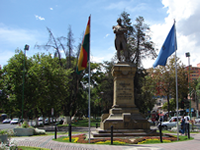
Plaza Colon and El Prado
The Alameda Colonial de Ingavi, was transformed into today's Plaza Colon and the Prado Avenue which is often host to parades and urban recreation in Cochabamba, Bolivia.Ver más

Plaza 14 de Septiembre
The Plaza 14 de Septiembre in Cochabamba, Bolivia is known for its colonial design and extensive history. It hosts incomparable gardens in this city of eternal Spring making this central plaza of Cochabamba a peaceful and inspiring environment.Ver más

Parque Machia
Parque Machia is located a short walk to the east of Villa Tunari in the department of Cochabamba, Bolivia. The topography presents splendid views of the Andean Cordillera Oriental and of the lowland tropical region. The bountiful wildlife and pleasant breeze make this an ecotourism hot spot.Ver más

Incallajta
The ruins of Incallajta are located about two hours and fifteen minutes drive or 142 Km from the city of Cochabamba in Bolivia. The great fortress of Incallajta is a testament to the splendor of the Inca Empire, its massive stone constructions covering roughly 12 hectares.Ver más
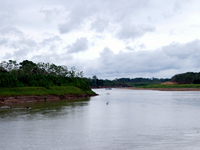
Puerto Villarroel
Puerto Villaroel in Bolivia marks the convergence of the departments of Cochabamba, Beni, and Pando by the rivers Ichilo, Mamore y Madre de Dios. Puerto Villaroel looks like a typical Amazonian port town with small wooden houses and people relaxing outside.Ver más

Casa de Murillo
Once the home of Don Pedro Domingo Murillo, a leader in the La Paz Revolution of July 16, 1809, in Bolivia, the Casa de Murillo displays collections of colonial art and furniture, textiles, medicines, musical instruments and household items of glass and silver that once belonged to Bolivian aristocracy.Ver más

Coca Museum
The Coca Museum in La Paz, Bolivia explores the sacred leaf's role in traditional societies, its use by the soft-drink and pharmaceutical industries and the growth of cocaine as an illicit drug.Ver más

Iglesia de San Francisco
The hewed stone basilica of San Francisco in La Paz, Bolivia, reflects an appealing blend of 16th-century Spanish and mestizo (indigenous-Spanish) trends. The cloisters and garden of the recently opened Museo San Francisco, adjacent to the basilica, beautifully revive the history and art of La Paz's landmark.Ver más

La Paz Cemetery
In La Paz Cemetery, as in most Latin American cemeteries, bodies are buried in the traditional Western way or placed in a crypt.Ver más

Lucha Libre
One one of the most popular local attractions in El Alto, Bolivia, is the Lucha Libre, or wrestling matches, where theatrical males and acrobatic cholitas play to the crowds.Ver más

16 de Julio Market
When visiting La Paz, Bolivia, for an excellent market experience don't miss the massive Mercado 16 de Julio, which stretches for many blocks along the main thoroughfare and across Plaza 16 de Julio. This shopaholic's paradise has absolutely everything, from food and electronics, to vehicles and animals.Ver más

Mercado Negro
The Mercado Negro in La Paz, Bolivia, is the place to pick up undocumented merchandise, much of it bootlegged, and just about anything else you may hope for.Ver más

Casa de la Libertad
On August 6, 1825, the freedom fighters of Bolivia assembled in the Casa de la Libertad to declare independence from Spain. You can visit the exact same room where the liberators met. The first Bolivian congresses were held in the Salon de la Independencia, originally a Jesuit chapel.Ver más

Glorieta Castle
The Castle of la Glorieta in Sucre, Bolivia, is a unique attraction which used to belong to Don Francisco de Argandona. The Castle of la Glorieta was constructed towards the end of the XIX century and exhibits various architectural styles - Mudejar or Mohammedan Style, neoclassic, baroque and neo-gothic.Ver más

Chuquisaca Prefecture
For the best view of Sucre, Bolivia, climb up up to the cupola of the wedding cake-like building of the Prefectura de Chuquisaca, next to the cathedral.Ver más

Catedral Basilica
The Cathedral in Sucre, Bolivia dates from the middle of the 16th century and is a harmonious blend of Renaissance architecture with later Baroque additions. The Catedral Basilica is considered to be the most valuable religious monument of Sucre.Ver más

Parque Bolivar
Parque Bolivar (Bolivar Park) in Sucre, Bolivia, is an open-air park which has an interesting collection of miniature replicas of famous French monuments such as the Eiffel Tower, the Arch of Triumph and the Obelisk of Buenos Aires. Parque Bolivar is the Sucre's favourite lovers' hangout.Ver más

General Cemetery
The general cemetery in Sucre, Bolivia, is one of the best options to go and learn a bit more about the life of known historical and political figures of the past, whose remains rest at this important landmark.Ver más

University of San Francisco
The University of San Francisco in Sucre, Bolivia, was founded on March 27th, 1624 by Padre Juan de Frias Herran.Ver más

La Recoleta Convent
La Recoleta Convent dominates the landscape of the city of Sucre in Bolivia, resting at the bottom of the Churuquella mountain. The Look-Out Point of Recoleta is located atop of one of the seven hills where the city of Sucre was actually founded.Ver más

Museums in Sucre
There are many important museums in the city of Sucre, Bolivia, dealing with religious, colonial, republican and ethnografic themes. This article is a brief description of the most important ones.Ver más
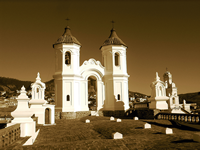
Churches in Sucre
There are many remarkable churches in the city of Sucre, Bolivia. This article is a brief description of the most important ones.Ver más

Cretaceous Park (Cal Orck'o)
Cretaceous Park (Cal Orck'o) is definitely one of the most unique attractions in Bolivia. 65 million years ago the site of Sucre's Fancesa cement quarry, six kilometers from the centre, was the place to be for large, scaly dinosaurs.Ver más
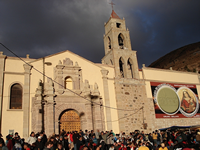
Sanctuary of Socavon
Santuario del Socavon is a religious temple of special devotion for the inhabitants of Oruro, where the Candlemas's Virgin is worshipped. The splendid Carnival of Oruro is carried out in her honor.Ver más

Lighthouse of Conchupata
Enjoy a panoramic view of the city of Oruro in Bolivia from the national monument called Lighthouse of Conchupata, where the current bolivian national emblem was hoisted for the first time on November 7th, 1851,Ver más

San Miguel de la Rancheria Church
San Miguel de la Rancheria is one of the oldest churches in the city of Oruro in Bolivia. It keeps paintings and sculptures of enormous sacred value.Ver más

La Portada del Beaterio
La Portada del Beaterio, sculpted in stone, is a pilgrimage center in devotion to its founder, Sister Nazaria March, beatified in 1993. It has a convent where a small museum exists with its founder's belongings.Ver más

Yarvicoya Church
The Yarvicoya Church is another remarkable example of the mestizo Baroque art. It is located a few kilometers from Oruro in Bolivia. The church has been declared a national monument.Ver más

San Jose mine
The silver, lead and tin that were extracted of the tunnels of San Jose mine were very important for the economy of Bolivia. The mine, located at 5 kilometers from downtown Oruro, began to be exploited two centuries ago.Ver más

Curahuara de carangas
Located Southwest from Oruro in Bolivia, Curahuara de Carangas was built over the flat terrain of the Altiplano (High Plateau) while following a typical architectural style from colonial times. Curahuara was also known as 'Ruta de la Plata' (The Silver Route), and it was the only way of access to the Pacific Ocean.Ver más

Capachos and Obrajes
The waters of the spas of Capachos and Obrajes near Oruro, Bolivia, are hot and medicinal and a temptation for the tourists that arrive in Oruro.Ver más

Chullpares bridge
From Chullpares bridge near Oruro, built in the colonial time, the beauty of the highlands of Bolivia can be appreciated.Ver más

Lake Poopo
Lake Poopo is located at 65 kilometers from Oruro in Bolivia, on the route that leads to the neighboring department of Potosi. The biggest attraction is the island of Panza, an ideal place for hunting and fishing.Ver más

Plaza 10 de Noviembre
The Main Square, also known as 'Plaza del Regocijo' mostly because twice a year, since 1890, this is the site where the Carnival is celebrated, as well as other national holidays. In the past it was the place for bull fightsVer más

Kari Kari Lagoon
In 1575, the viceroy Toledo ordered to build several artificial lagoons east of the city that would be useful to accumulate water during the rainy season, with the intention of using them in the dry periods. The artificial lagoons of Potosi are considered to be one of the main elements of the mining infrastructure.Ver más

Arcos de Cobija
Potosi's elaborate colonial architecture merits a stroll around the narrow streets to take in the ornate doorways and facades, as well as the covered wooden balconies that overhang the streets. Architecturally notable are the Arcos de Cobija on the street of the same name.Ver más
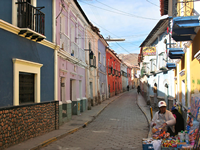
Calle Quijarro
Unesco World Heritage North of the Iglesia de San Agustin, Calle Quijarro narrows as it winds between a wealth of colonial buildings, many with doorways graced by old family crests. It's thought that the bends in Calle Quijarro were an intentional attempt to inhibit the cold winds that would otherwise whistle through and chill everything in their path.Ver más

Supay Molino Qaqa
At Supay Molino Qaqa, (The devil's Mill) the rupestrian paintings are painted over an oblique wall. The surface of this wall seems to be covered by an arenaceous-ferrous type of stone. We can also appreciate very clearly certain geometric figures , zoomorphic representations (Ruminants and Camelidae) and anthropomorphic figures.Ver más

Jatun cave
At the Jatun cave we can see petroglyphs and pictographs spread all across the place. Some of these designs have a basaltic formation. About 40 of these designs painted with red have zoomorphic and anthropomorphic motives.Ver más

La Puerta del Diablo
La Puerta del Diablo (Devil's Door) is located six kilometers from Potosi and presents an interesting geological structure made of red sand-stone, a construction that extends all the way to the entrance of the caveVer más

Tarapaya Lagoon
Known also as 'the Inca's Bath', the Tarapaya Lagoon is an extremely famous and constantly visited natural attraction. The lagoon is filled with thermal waters, which give origin to other spring water sites.Ver más

Thermal water fountains
The Thermal-Water Bathing Resort is in Tarapaya, located on the road to the city of Potosi. Ideal for spending the entire day enjoying warm and healthy waters loaded with zinc sulfide which come from the natural lagoon.Ver más

Casa Dorada
The Casa Dorada (Golden House) has as one of its main features its highly symmetrical design. The front resembles a single tile made of several columns. The top portion has window openings with a semicircular groined arch atop of each oneVer más

Las Americas Avenue
The Las Americas Avenue offers an extensive and beautiful stroll. Located at the side of the Guadalquivir River, it surrounds the southern part of the city.Ver más

San Francisco Church
Construction of the San Francisco Church began in the 17th century, although its current facade corresponds to the 18th century. In 1610, people responsible for the temple headed the foundation of La Cofradia de Nuestra Se�ora de la Visitacion, composed by the freed black slaves residing in the city.Ver más

Metropolitan Cathedral of Tarija
The Metropolitan Cathedral of Tarija was built in 1810 by the Jesuits and declared a cathedral in 1925. At present, it runs a public school and in its interiors it harbors the Cathedral Museum that displays valuable objects such as oil paintings, silver work and gold chalices with stone inlays.Ver más

San Roque Church
Iglesia de San Roque (the Church of San Roque) is built on wooden pitches, disposed in forms of columns. The temple has three wooden vessels in wooden and external eaves. The roof of tiles rests on a hurdle lattice. The church was remodeled in the second half of the nineteenth century by the Argentine architect Bustamante.Ver más

San Juan Church
The San Juan Church was founded in 1632. The surrender of the Spaniards was signed here, and so the victory of the National Liberation Army was enacted, after the battle of La Tablada in April 1817. It is located in the area of the same name from which visitors can appreciate a panoramic view of the city.Ver más

San Lorenzo
Located at 16 Km from the city of Tarija, the town of San Lorenzo displays Spanish colonial styles, wood-carved balconies and stone-layered streets. In this town is the house of Eustaquio 'Moto' Mendez, hero of Bolivia's fight for independence from the Spanish rule and a beautiful church with an archaeological style from 1709. The house is currently a museum.Ver más
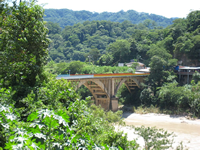
Bermejo
Bermejo is a border town adjoining Aguas Blancas, Argentina.It is relaxing place in which it is possible to practice fishing. The 'Festival Internacional del Lapacho' is held here. The main tourist attractions of the region are: El Chorro: A natural spa and El Cajon: Those who prefer adventure will find in 'El Cajon' the best place for sport fishing.Ver más

Coimata
Located at 15 kilometers from the city of Tarija, Coimata is a natural attraction that has a water fall of crystalline water, which descends from two mountains. At the bottom of the fall, there is a pool that was formed naturally, and is a favorite among most visitors who enjoy its warm temperature.Ver más

San Jacinto Dam
San Jacinto dam is located at 7 kilometers from the city. There is an asphalted road leading to this site, which is perfect for long, relaxing walks, marathons and other competitions. The dam is also one of the main tourist attractions of Tarija and it is the perfect spot to practice a series of water sports, such as swimming, kayaking and fishing.Ver más

Chaco Region
Great part of the Chaco Region is conformed by immense plains that extend towards the south. It has rich wood forests and possesses important navigable rivers, such as the Pilcomayo River. Its fishing resources feed many human settlements, such as the Tobas and Matacos communities.Ver más

Trinidad Cathedral
Built in 1931 in academic style. This church was mostly built with rubble, but it does have several valuable objects considered antiques and also because of their artistic characteristics. Some interesting pieces worth mentioning include paintings such as 'Nuestra Senora de Belen' (Our Lady from Bethlehem), which was made by artisans from Cuzco and 'El Nacimiento del Nino Dios' (The Birth of the Infant God), painted in GuamagaVer más

Anillo de Circunvalacion
A construction made of stone and concrete of approximately a meter wide by two meters high that surrounds the city of Trinidad to avoid floods during the rainy season.Ver más

Casco Viejo
In the north part is the old side of the city of Trinidad which has constructions from the colonial period. Its wide paved streets and wide corridors protect people from the strong solar rays characteristic of the tropical climate.Ver más

Loma Suarez
Loma Suarez (Suarez Hill) is located 12 Km Northwest from Trinidad, at almost 8 Km from 'Puerto Ballivian' (Port Ballivian), on the shores of the Ibare River, a whitewater river of warm temperature. Here visitors can see an exuberant landscape inhabited by all kinds of birds and animals.Ver más

Loma Chuchini
Located at 8 Km from Loma Suarez, Loma Chuchini exhibits a landscape typical of a tropical jungle. Chuchini means 'the tiger's den', mostly because in this area there are lots of felines of this kind. Loma Chuchini has 90 species of birds and animals, more than 100 species of flowers and 15 families of fish. It is considered to be a natural sanctuary of birds, macaws and herons. This is a perfect place for a photographic safari.Ver más

San Ignacio de Moxos
This is the folkloric capital of Beni. Throughout the whole year sports like swimming, water ski, fishing and hiking can be practiced. This town is famous for its annual festival in which the residents dress as bulls and mamas and head for the main streets in devotion to San Ignacio. During the festivity the macheteros and groups of musicians participate with fantastic musical instruments made by themselves. It is a party filled with joy and colors that the visitor cannot miss.Ver más
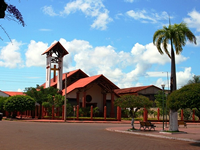
Guayaramerin
Guayaramerin is the main port of the Bolivian north. For a gastronomic delight, it is possible to taste delicious plates of fish.Ver más

Santa Ana de Yacuma
Santa Ana of Yacuma is known as the cattle capital of Beni, with green prairies suitable for agricultural activity and raising cattle. The suburban area is a tourist attraction because its rivers are ideal for sport fishing.Ver más

Suarez Lagoon
The Suarez Lagoon is an artificial lagoon located five kilometers from the capital city of Beni. The Suarez Lagoon was constructed by the Paititiana peopleVer más

Town center of Cobija
The panoramic beauty of Cobija seems like a work of art painted by the most capricious and audacious of artists.The main square is one of the most interesting in Bolivia.Ver más

Puerto Rico
From the town one can observe the spectacular confluence of the rivers Tahuamanu and Manuripi. The visitor will be able to appreciate the work done with products such as chestnut and rubberVer más

Nueva Esperanza or Araras
The inhabitants of Nueva Esperanza or Araras are dedicated to the exploitation of gold. It is located on the left bank of the Madera River, in an area gifted with beautiful landscapes.Ver más

Cachuela Esperanza
Cachuela Esperanza is located 43 km far away from Guayaramer�n the second most important city in Beni. In this zone there is a very rich flora, fauna and cattle production. It is also well-known for the production of rubber, chestnut and wood.Ver más

Dinosaur footprints
At 5 kms from the city of Sucre in Bolivia lies Cal Orcko, a giant 80 meters hight and 1.2 kilometers long wall that has petrified footprints of dinosaurs. Cal Orcko is one of the most important pre-historic findings in the world.Ver más

Colonial Cities
Sucre and Potosi are the best known colonial cities in Bolivia. Sucre, the White City, is the constitutional capital of the Republic of Bolivia. Potosi is, at around 4000 meter, the worlds highest city. The mines of the Cerro Rico are the richest mines in all of world history.Ver más

Flower Market
The Flower Market in La Paz, Bolivia, appropriately located opposite the cemetery at the top of Batista, is a beautiful splash of color amid one of the city's drabber and less safe areas.Ver más

Inca machay, Puma machay
Inca machay and Puma machay are 1000 to 2500 year old pictographic rock paintings near the city of Sucre, Bolivia.Ver más

Supay Huasi
Supay Huasi is a series of rupestrian paintings near Sucre, Bolivia, which correspond to the era on which ceramic pieces began to be painted in the Valley area of Bolivia. The name means House of the Devil. The actual scenery and the overall beauty of the place are additional attractions.Ver más

P'Ita Orko
P'Ita Orko is made up of four panels located around a path belonging to the period where ceramic paintings were not common in the region of the Americas. Their antiquity is estimated to be more than 2500 years.Ver más

K'atalla (Seven falls)
At only eight kilometers from Sucre in Bolivia, there are several waterfalls of pure, crystalline water, which provide a very picturesque and unique view. In the surrounding areas there are seven waterfalls.Ver más

Bramadero
Bramadero or the Refuge of the Mountaom, is located at the bottom of the Mountain of Chataquila, at 35 kilometers from Sucre, the capital of Chuquisaca department in Bolivia. Bramadero has several and very comfortable cabins, which allow visitors to enjoy a very unique view of the entire area.Ver más

Quila Quila
Quila Quila near Sucre, Bolivia, is and old colonial style town that has strong Pre-Hispanic roots,located at a height of 3,100 meters above the sea level. The streets have been built on straight angles and are surrounded by homes made of mud and roofs made of straw.Ver más

Potolo
Potolo near Sucre in Bolivia, is famous for its conical hats and beautiful textiles that have several designs of animals such as: vicunas, llamas, eagles, condors, frogs, etc. The textiles have certain interesting names such as: llijllas and chuspas. They continue to be used as the most typical outfits of the area.Ver más

Candelaria
Near Tarabuco, Bolivia (at 26 kilometers) is the town of Candelaria, the cradle of masterful weavers and schemers. The work of the women from Candelaria, done entirely by hand, is highly coveted mostly because of its symmetry, the figures and the wonderful usage of color.Ver más

Villa Serrano
'Villa Serrano' (Serrano Village) near Sucre, Bolivia, is known for the unique way in which its inhabitants celebrate Christmas. Aside from this colorful festivity, this town is well-known for the production of some of the finest charangos (small guitars invented in Bolivia).Ver más

Camargo
Between Sucre and Potosi in Bolivia is the canyon of Camargo, a valley where the grapevine production is one of the main sources of income and long standing tradition. Fine wines are elaborated here as well as 'Singani' (Singani: a typical Bolivian drink, hard liquor made of wine remains).Ver más

Oropeza and Zudanez Provinces
The skilful indigenous residents of Oropeza and Zudanez Provinces in Bolivia elaborate traditional fabrics of great quality, which are highly prized throughout the world.Ver más

Churches and Convents in Potosi
Iglesia de San Lorenzo de Carangas, Temple of Copacabana, Cathedral, San Cristobal, Santa Teresa, San Francisco, Iglesia de San Martin, Church of San Pedro, Torre de la Compania, Iglesia de La Merced, Iglesia de San Agustin, Iglesia de San Benito, Iglesia de San Bernardo, Iglesia de San Juan de Dios, Iglesia de Santo DomingoVer más

Portal of the Rampant Lions
The construction of this landmark dates back to the end of the XVIII century. In accordance with the typology of the portal this piece belonged to a Cacique (Indian Chieftain) a captain of the mines. The building was almost entirely remodeled in 1970Ver más

Casa de Francisco de la Rocha
The Casa de Francisco de la Rocha in Potosi presents a front with beautiful-symmetric designs. The portal itself may be the most interesting portion of the entire construction. The construction as a whole retains a certain mestizo style design.Ver más

San Marcos Mill
This mill used to belong to the Countess of the 'Real Casa de Moneda' (Royal Mint House). It is equipped with a large, 6-meter wide wheel, which was reconstructed together with the entire grinding system of the mill.Ver más

El Cabildo
Potosi's elaborate colonial architecture merits a stroll around the narrow streets to take in the ornate doorways and fades, as well as the covered wooden balconies that overhang the streets. Architecturally notable is El Cabildo on Plaza 10 de Noviembre.Ver más

Sara Cancha
Sara Cancha, at about 250 meters from Lajasmayu, has beautiful paintings scattered all along one of the walls. Around the border there are depictions of various Camelidae species lined-up in rows and also anthropomorphic images.Ver más

Qaqa Cancha
n order to reach Qaqa Cancha, it is necessary to pass through the community of Supay Molino. Here we can find about twenty different paintings with geometric figures, representations of various types of fabrics, etc. All of these are painted with reddish-purple painting.Ver más

Road to Betanzos
The road to Betanzos is an ancient Inca road presenting a varied array of views. In Pignasi we can find additional remains of rupestrian paintings, especially in the place known as El Rincon (The Corner).Ver más

Tecoya Sector
Arriving at Tecoya (3,300 meters above the sea level), there is a 40 meter high statue made of stone, called the Tecoya Christ. This piece clearly depicts the face of Christ, his hair and his robe. At his feet, there is a beautiful water spring, also known as the Spring of Pajcha.Ver más

Gold Museum
The small museum in Challapampa displays Inca treasures, ancient pottery and some metal objects discovered underwater off the island. Many come from Johan Reinhard's underwater research near the northern end of the island, others have been donated by the people of Challapampa.Ver más

Chincana Labyrinth
About 300 meters southwest of Titikala (Roca Sagrada or Sacred Rock) is an elaborate Inca ruin called the Chincana (the Labyrinth). Also named the Palacio del Inca, or El Laberinto, or labyrinth, these ruins on the top of Isla del Sol form the complex of the Titicaca, or sacred rock.Ver más
































